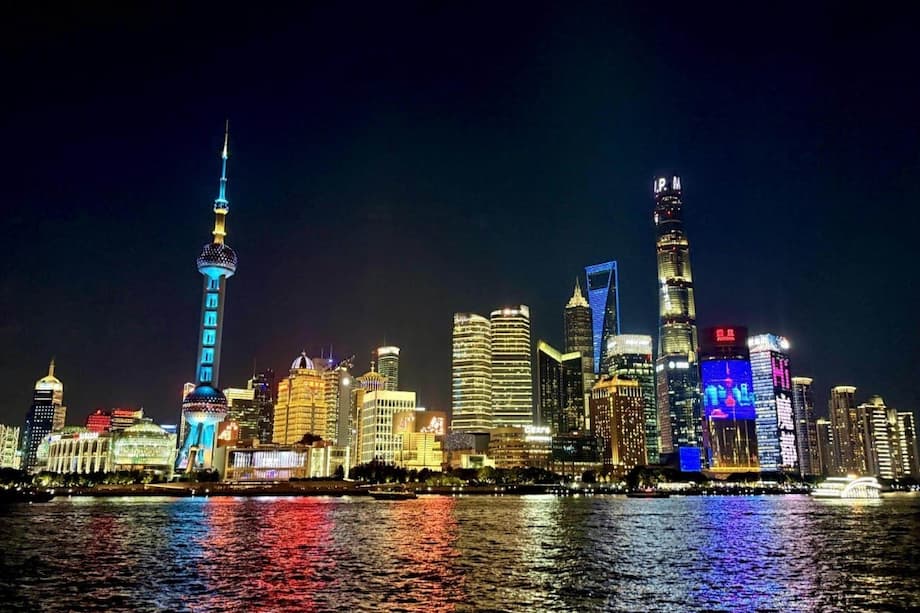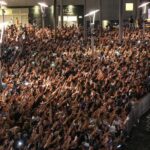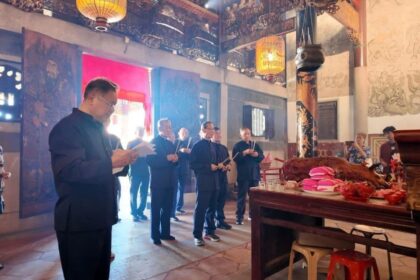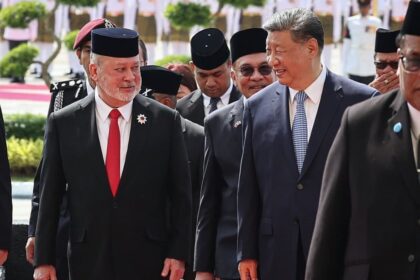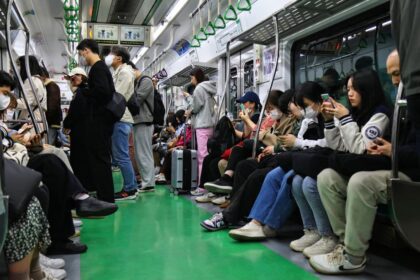The new weekend habit sweeping South Korea
Shanghai has vaulted ahead of Tokyo and Hong Kong as the city young South Koreans pick for quick escapes. The shift is visible in airport queues, mobile payment dashboards, and packed restaurants from Xintiandi to the Bund. City records show 4.16 million international arrivals by mid August 2025, up nearly 38 percent compared with last year as inbound travel rebounds. South Koreans account for 423,000 of those visits, a surge of 130.7 percent from 2024, making them the largest foreign visitor group in the city. China’s temporary visa waiver, introduced in November 2024 for South Korean passport holders, lets visitors stay up to 30 days. Combined with late departures and short flight times, the policy has turned a two or three day Shanghai trip into a routine option for students, office workers, and young families.
- The new weekend habit sweeping South Korea
- Why Shanghai is topping the list
- Visa-free entry and flight capacity change the math
- Social media is the new travel agent
- Eating, shopping, and the night view
- Businesses in Shanghai adapt to Korean guests
- Money, apps, and moving around the city
- Culture and history add depth to short trips
- What it means for regional travel and business
- Key Points
Among Koreans, Shanghai is now known as a night owl getaway, a city that stays awake for food, lights, and photo spots along the river. A quarter of weekly flights from South Korea to China now land at Shanghai’s two airports, funneling visitors directly into a dense center of neighborhoods, museums, coffee shops, and nightlife. Travel platforms point to a sharp release of pent up demand. Bookings to the city have spiked across tours, same day activities, and airport transfers, especially among solo travelers and pairs in their 20s and 30s.
Why Shanghai is topping the list
Proximity, density of sights, and a mobile first city experience are the core reasons. Flight time from Seoul or Busan to the city is around two hours, short enough to fit around a standard workweek. Once on the ground, a modern metro, bilingual station signs, and clear wayfinding make it easy to move between historic concessions, modern towers, and creative districts. The city boasts one of the richest cafe scenes in Asia, with more than 9,000 coffee shops. Nightlife is within walking distance of major hotels, and the evening skyline along the river creates a ready made itinerary for photography and rooftop venues. Many visitors say the variety of food is the main draw, from soup dumplings and noodles to hot pot, grilled fish, and new Chinese desserts.
At a downtown Da Run Fa supermarket, the shift is tangible. The chain has rolled out Korean language signs, trained staff to greet shoppers in Korean, and added conveniences such as fruit cutting and free packaging. Select counters accept Kakao Pay and Naver Pay, creating a familiar checkout for visitors who may still be learning to use local apps.
Store manager Pan Chengxin said, “Most of our Korean visitors are in their 20s and 30s. They usually come in small groups, friends, sisters or couples.”
Restaurants and hotels are racing to match demand. The hot pot giant Haidilao has seen as many as 600 Korean diners a day at some central outlets, and several branches now offer Korean menus and Korean speaking staff. Popular bakeries and snack shops near tourist routes have posted welcome notes in Hangul and tailored small touches, like fruit trays in waiting areas, that reflect Korean preferences.
Visa-free entry and flight capacity change the math
Policy set the stage. From November 2024, South Korean passport holders have been able to visit China visa free for stays up to 30 days. By mid August 2025, the city had recorded 4.16 million foreign arrivals, with South Koreans the largest single group. Booking trends spiked immediately. During the New Year period, inbound orders from South Korea to Chinese destinations more than doubled compared with a year earlier. For Shanghai alone, Klook flagged an 88 percent rise in interest for 2025, with rapid growth in short notice bookings and airport transfers. The pattern points to younger travelers planning trips on short lead times and tailoring schedules by neighborhood, cafe, and restaurant rather than through fixed group tours.
Air links expanded in parallel. Travel data cited a 115.8 percent on year surge in demand on the Busan to Shanghai route, while departures from Seoul rose up to 46.9 percent. There are now as many as 40 direct flights daily between Seoul and Shanghai during peak periods. A quarter of weekly flights from South Korea to China now touch down at Pudong or Hongqiao, reinforcing the idea that a swift weekend hop is practical across the country, not only from the capital area.
Flight schedules make two night trips easy
Late evening departures on Friday and early returns on Monday morning let travelers fit two full days on the ground without taking long leave. The window is ideal for itineraries built around a few districts, such as a city walk from Xintiandi to Tianzifang, an afternoon at the Bund and Shanghai Museum, and an evening food crawl near Wukang Road. Families add Disneyland or the aquarium. Friends often split up time between shopping lists, coffee spots, and a hot pot dinner that ends near midnight.
Social media is the new travel agent
Young Koreans plan these short trips with phones, not brochures. Naver’s Chinese Travel Community has grown fast since late 2024. Must eat maps circulate on Instagram, and step by step guides explain how to use Alipay, order ride hailing, and find late night dining. Posts tagged with travel to China after work on Friday have racked up hundreds of thousands of views, turning specific venues into magnets. The same venue can appear in hundreds of feeds within a week, generating lines that surprise local residents.
At Long Time Ago Lamb Kebab in central Shanghai, one visitor waited with her husband and child as the queue crept forward. The entrance was packed with Korean speaking travelers checking their phones for table numbers and suggested dishes. The visitor, Esther Chan, said the restaurant was everywhere on Korean social feeds.
“It is a go-to for Koreans. Everyone comes here when traveling to Shanghai.” She added, “I would love to try something more local, but it is hard to access without better information.”
That dynamic is shifting as more Koreans download Xiaohongshu, known to many as RedNote, and use translation tools to search for options beyond the trending lists. Shanghai restaurants are also moving onto Instagram and posting in Korean to reach visitors before they arrive. The result is a tighter loop between local businesses and regional travelers, with menus, maps, and service details adjusted in real time.
Eating, shopping, and the night view
Food and scenery sit at the center of most two or three day plans. First time visitors pair a morning on the Bund with a stroll through the former foreign concessions, stopping for coffee near Wukang Road or in alleyways around Tianzifang. Late afternoon often goes to Yuyuan Garden or the Power Station of Art, then a riverfront view of what visitors call the “billion dollar skyline.” Many head to Shanghai Disneyland, the largest Disney resort in Asia, for one of the days, while others choose museum hopping and dessert shops.
From budget chains to luxury malls
The shopping list ranges from street level to high end. Budget friendly chains like MINISO draw lines for blind box toys and collaborations with pop culture brands. Supermarket runs to RT Mart, widely known by its Chinese name Da Run Fa, are a surprise hit, especially for fruit wines, flavored baijiu, hot pot bases, and China only snack flavors. The stores have added Korean language signs, introduced staff training about Hallyu, and promoted services that appeal to short stay visitors, such as quick gift packing. Many travelers seek out cosmetics at Harmay, desserts at Holiland, accessories at Zzer, and local bubble tea brands like Chagee. Even a simple stroll through Xintiandi into Tianzifang provides enough boutique stops, street food, and photo corners to fill an afternoon.
Businesses in Shanghai adapt to Korean guests
Across the city, the response has been fast. Hot pot chains have posted Korean language menus at the entrance and hired Korean speaking servers. Cafes, bakeries, and night market stalls have learned basic greetings in Hangul to make ordering easy. Some outlets report 60 to 200 Korean customers a day, with central locations occasionally counting far more during weekends. Hotels near the Bund and the former French Concession have trained concierge teams to help with cashless payments, taxis, and late checkout for Monday flights.
Marketing has followed the crowds. The Press, a heritage building turned restaurant across from the riverfront, launched social media content in Korean and printed a city walk map in Korean for guests. The map highlights nearby landmarks such as the Customs House, the Postal Museum, and the quay. Many shops now encourage visitors to share posts, offering small gifts to anyone who tags the store and uses Korean language hashtags, which in turn feeds the planning loop for the next round of weekend travelers.
Money, apps, and moving around the city
Payment and transport, once a source of anxiety for first timers, are far easier than they were before 2023. Visitors can link international bank cards to Alipay or WeChat Pay and settle bills almost everywhere without cash. UnionPay works widely, and more stores are adding acceptance for Korean wallets such as Naver Pay in high traffic areas. Didi provides quick ride hailing in English. The metro covers the main sites with clear signage, ticket machines that switch to English, and station staff used to fielding questions from foreign riders. For food delivery and reviews, Meituan is key, though travelers still lean on Naver and Instagram for discovery.
A short guide for first timers
A few practical steps help a quick weekend go smoothly.
- Link a Visa or Mastercard to Alipay or WeChat Pay before arrival if possible, or complete the setup with a passport on day one.
- Carry a physical passport for hotel check in, SIM purchases, and metro card refunds.
- Download Didi and set the app language to English, then save hotel addresses in Chinese and Korean for drivers and hotel doormen.
- Use metro lines 2 and 10 to move between the riverfront, shopping districts, and older neighborhoods, then switch to taxis late at night.
- Save key phrases in Korean and Chinese on your phone to show staff if translation apps lag.
Culture and history add depth to short trips
The rush to new restaurants sits alongside a quiet stream of heritage stops. Many South Koreans visit the former site of the Korean Provisional Government on Madang Road to pay respects to independence leaders who organized in the city during the colonial period. Family photos outside the red brick facade are common. City walks through neighborhoods shaped by foreign concessions reveal European architecture next to Chinese townhouses, a visual record of how trade and politics shaped the city from the 1840s through the mid 1900s. For young travelers raised on K music and streetwear, the mix of retro facades and contemporary fashion makes the city feel both familiar and exploratory.
What it means for regional travel and business
The Shanghai surge sits within a wider weekend tourism circle linking China, South Korea, and Japan. When China broadened visa waivers to more countries, inbound orders from the two neighbors jumped around holiday peaks. Cultural ministers from the three countries have set a goal of 40 million mutual visits by 2030. The current flow makes that target look reachable. On the ground, the trend supports small businesses, from late night skewer shops to boutique hotels, and gives young travelers an accessible way to learn about each other’s cities. Brands that meet guests where they plan their trips, offer clear information in Korean, and remove friction at the register are seeing the quickest gains.
Key Points
- Shanghai has overtaken Tokyo and Hong Kong as the top quick trip choice for young South Koreans.
- By mid August 2025 the city recorded 4.16 million foreign arrivals, up nearly 38 percent on year.
- South Koreans led all foreign groups with 423,000 arrivals, a 130.7 percent jump from 2024.
- China’s visa waiver for South Korean passport holders began in November 2024 and allows stays up to 30 days.
- Roughly one quarter of weekly flights from South Korea to China now land in Shanghai.
- Klook reported an 88 percent rise in Korean interest for Shanghai in 2025, with day tours up 549 percent and transport services up 538 percent.
- Demand on the Busan to Shanghai route rose 115.8 percent on year, with as many as 40 daily flights now operating between Seoul and Shanghai.
- Local businesses have added Korean language menus, staff, and payment options such as Kakao Pay and Naver Pay.
- Social media drives planning, with must eat lists on Naver and Instagram steering travelers to specific venues.
- Historic sites such as the Korean Provisional Government building on Madang Road add meaning to short visits.


